louis j. millet-designed st. louis union station polychromatic canvas frieze panel joins bldg. 51 museum collection
This entry was posted on May 3 2016 by Eric
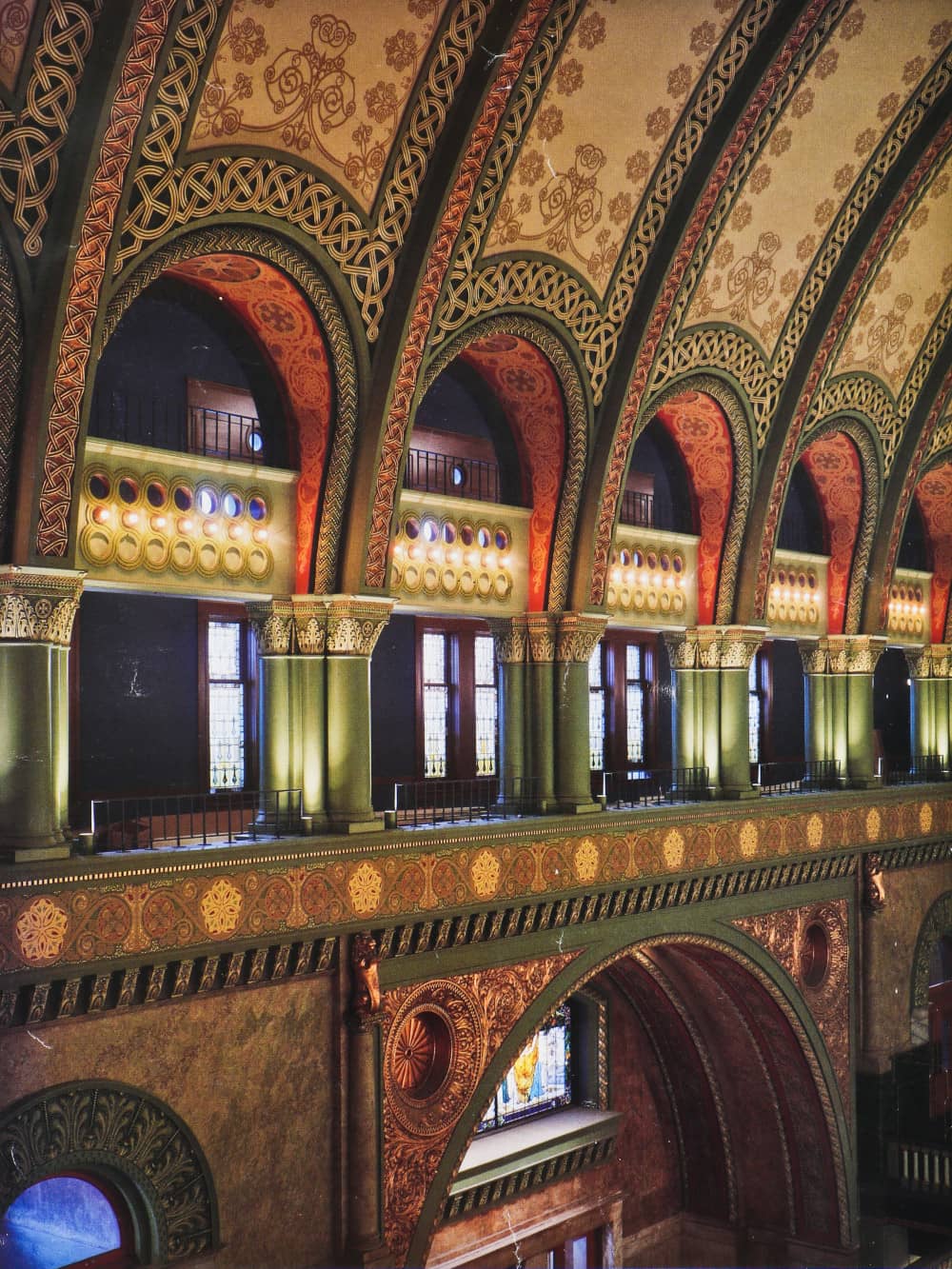
as the early 20th century head (roman goddess diana) of montgomery ward's "spirit of progress" joins an exhibition at the chicago cultural center, a new historically-important (with ties to both st. louis and chicago) and finely executed artifact enters the bldg. 51 collection, thanks to my good friend, cultural historian tim samuelson (who organized said exhibition). tim was incredibly gracious in gifting me with a stunning roll (nearly 8 feet in length) of a richly-colored healy and millet-designed stenciled canvas frieze fragment from the st. louis union train station (theodore link, architect), that is soon be framed and stewarded among the american architectural artifacts in the bldg. 51 museum collection.
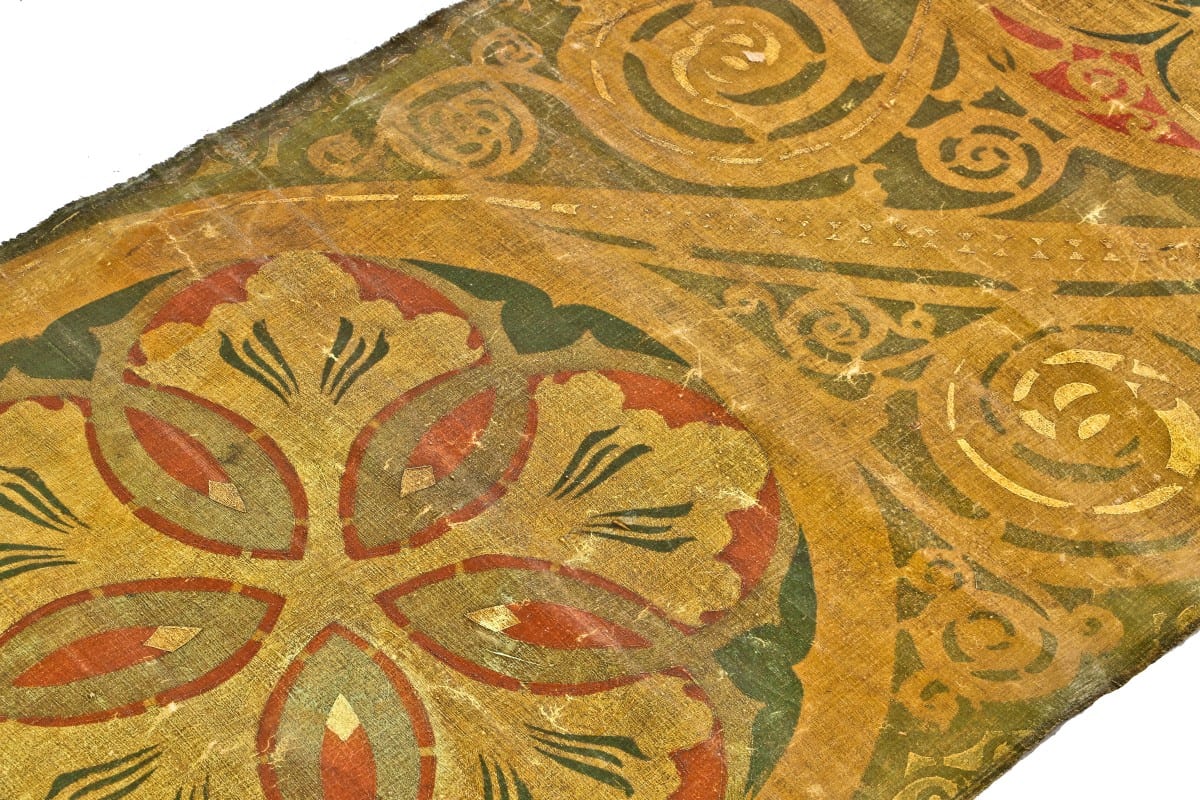
the impressive stenciled canvas painted in a muted green, gold and red palette was executed by louis j. millet for the 1894 st. louis union interior headhouse. the finely executed canvas represents the "core" design with a partial repeat accentuated with several colors. the frieze panel was originally mounted against the wall beneath the romanesque columns. millet was given quite a bit of creative input into the overall design configuration, so it's no surprise that the canvas incorporates "sullivanesque" design elements, since it was likely being worked on near drafting or drawing tables displaying the canvas designs for adler & sullivan's chicago stock exchange trading room, completed in 1894 - the same year the st. louis train station was built.
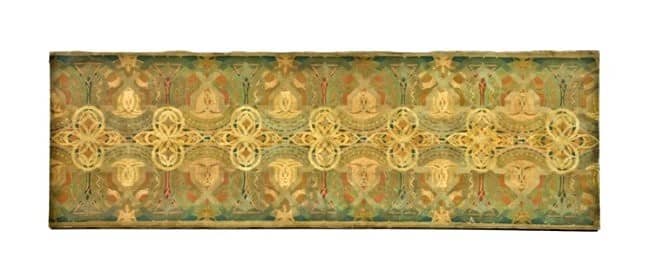
it is somewhat perplexing however, that all the original stencil were entirely removed, replaced, rather than cleaned and reinstalled in their original context. nonetheless, i am grateful to have been gifted this artifact from when samuelson was involved with the restoration of the train station's hall in the early 1980's.

the st. louis union station is a large romanesque structure that first opened in 1894, representing a competition-winning architectural design by theodore c. link. at a cost of $6.5 million, the structure incorporated awe-inspiring scale and ornament. on the exterior, the brick walls of the facade were faced with limestone, and the impressive terminal featured a 230-foot clock tower. link designed three main areas, the headhouse, midway, and train shed. the latter was an enormous, metal-framed structure that was once the largest and busiest passenger rail terminal in the world.
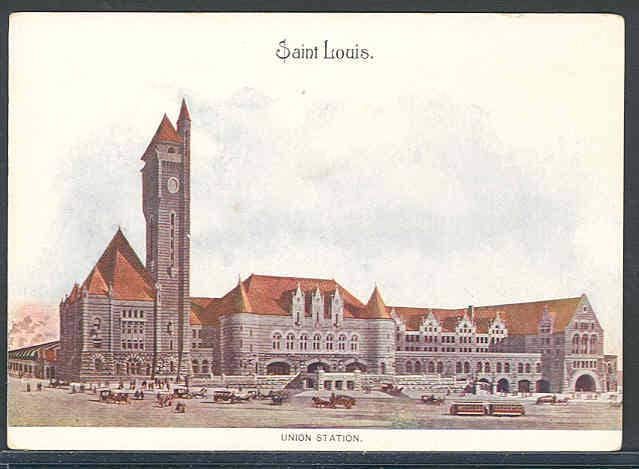
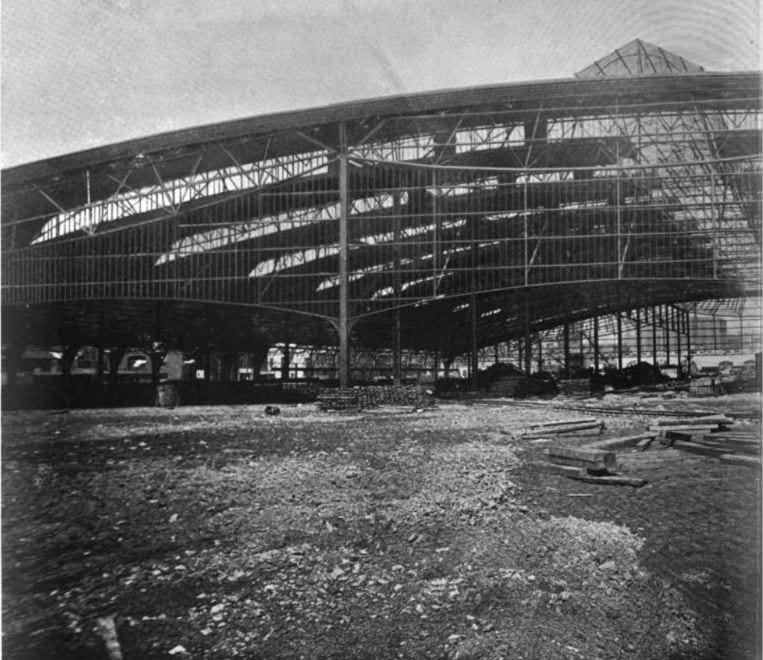
in the most ornate section of the entire building, the grand hall exhibited gilded arches and a 65-foot barrel vaulted ceiling decorated wholly with stained glass, mosaics, and gold leaf, as well as scrollwork and elaborate plasterwork, mostly executed by craftsmen from st. louis.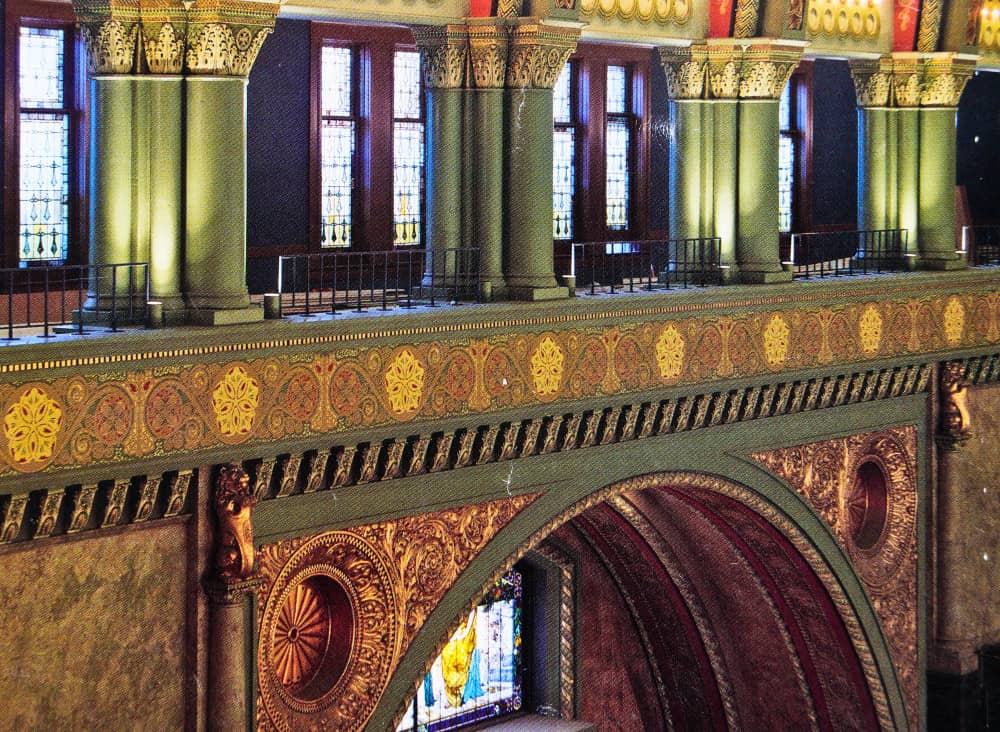
for his part, millet was a master colorist, and in partnership with george healy created the intricate, flat designs of this frieze panel by applying 10 or more colors of oil paint to produce the end effect. the "sullivanesque" design bears some resemblance to millet & healy's other work, and in fact the firm created the stencilwork for the st. louis union train station concurrently with that of the chicago stock exchange. the designers had first collaborated with sullivan on the auditorium building in 1889, and the train station was an independent project, that, along with the art institute's fullerton hall, cemented their design ethos as being akin to or in harmony with sullivan's.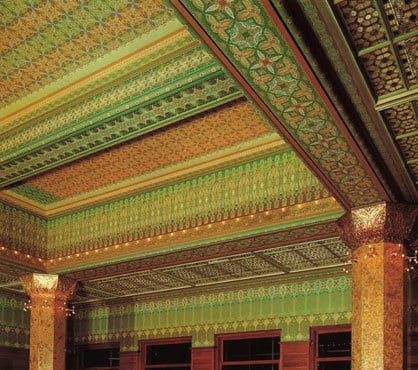
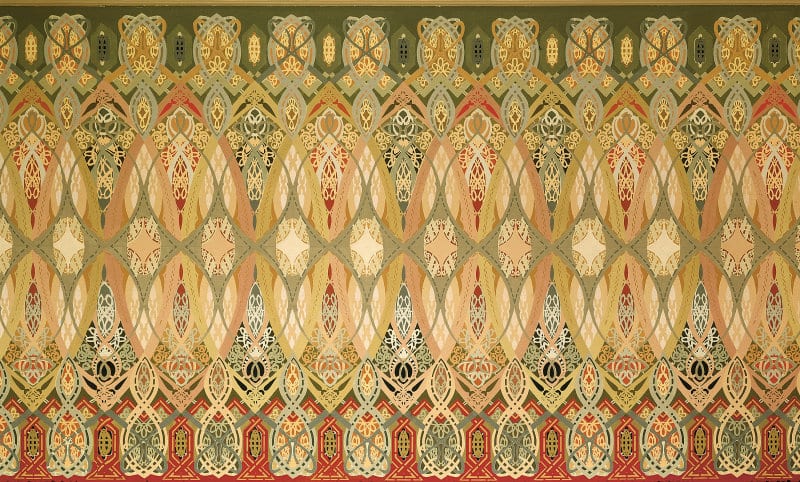
millet and healy had studied in paris during the 1870's, and continued to be friends and business partners after making a move to chicago in 1879. millet would go on to found the chicago school of architecture in 1893, which offered multidisciplinary degree programs between the art institute of chicago and armour institute of technology (millet also held academic posts in these institutions). the academic programs allowed aspiring architects to bridge an education between science and design, integrating engineering and art. millet's work as a teacher and designer also seriously propelled the arts and crafts movement in the u.s. by creating a formal program for learning decorative design that prepared hundreds of students for work in the industrial arts.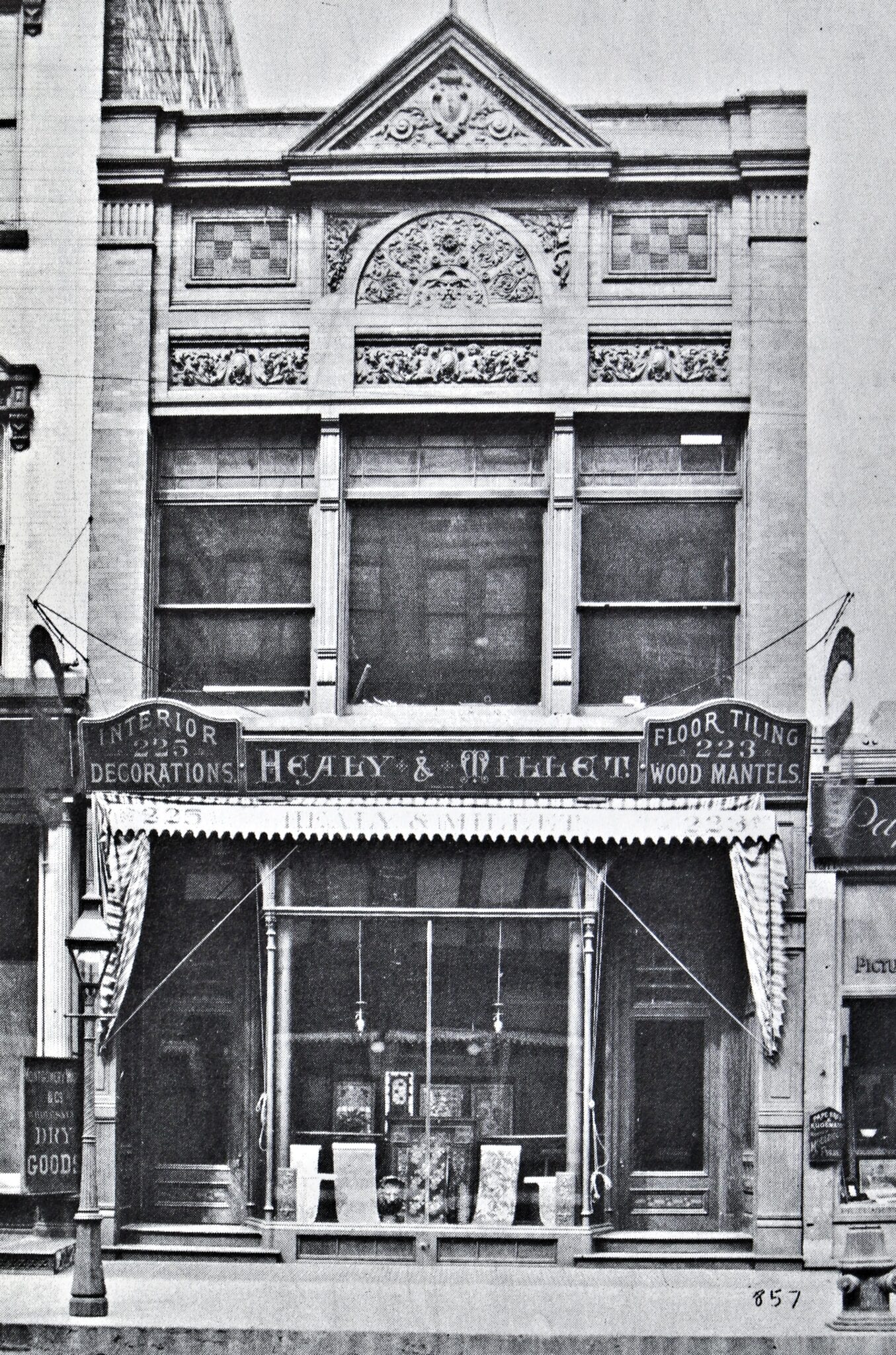
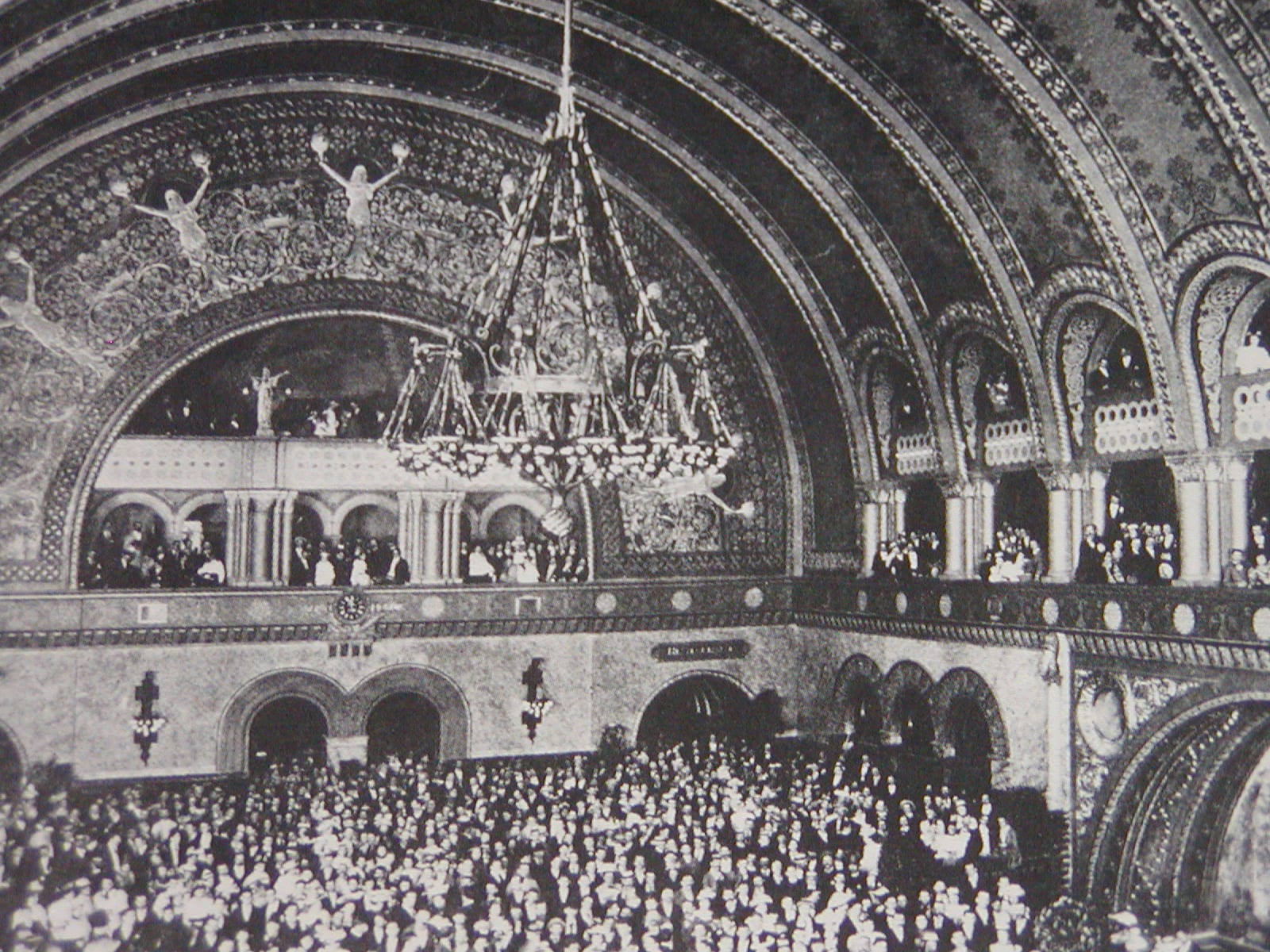
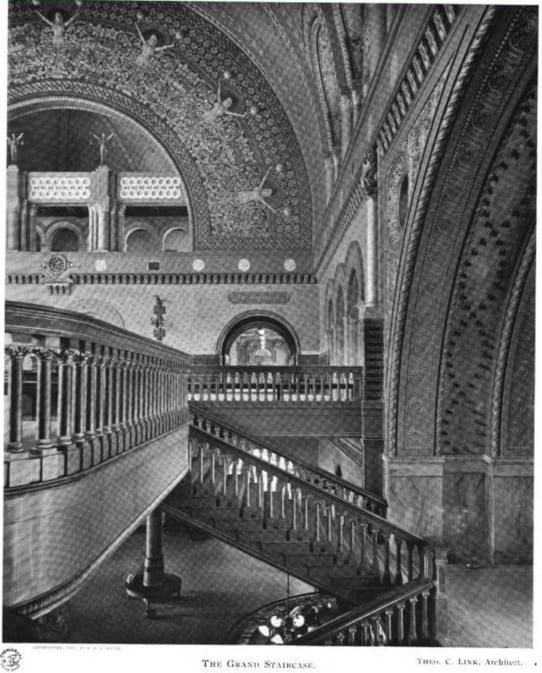
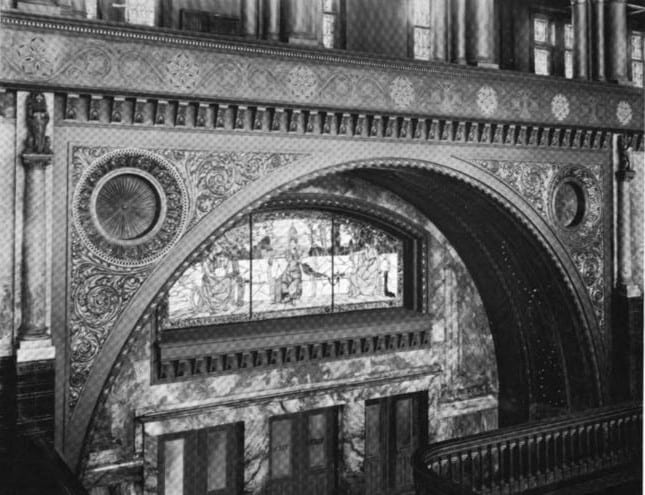
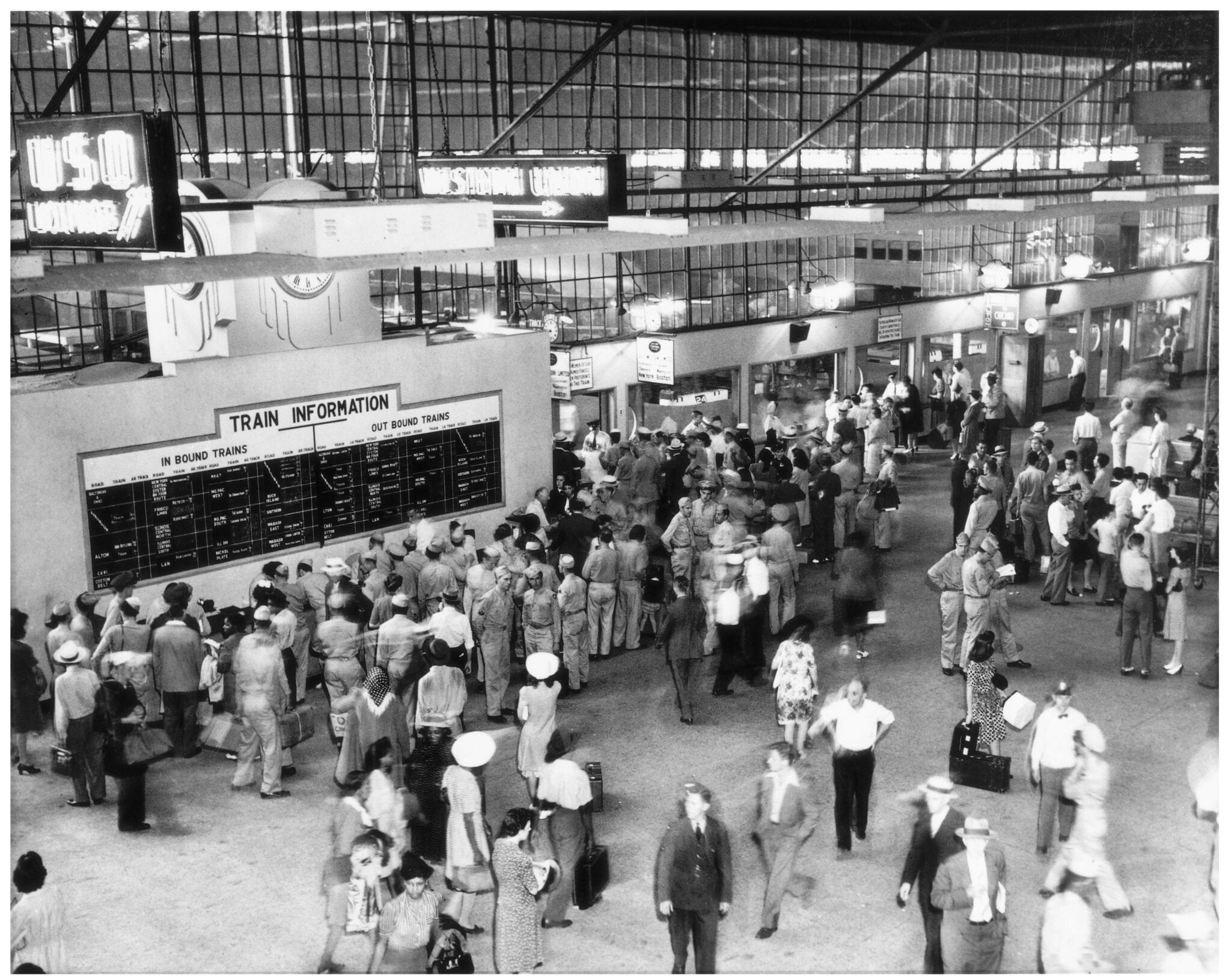 the st. louis station ceased operation in 1978, and re-opened 7 years later as a highly successful adaptive re-use project. as for millet's ornamentation, conrad schmitt studios inc., of new berlin, wisconsin restored the grand hall with samuelson's expertise, reproducing original color schemes. additionally column capitals were gilded with gold leaf and finished with protective lacquer. lavish decorations were completely restored and stenciling on the ceiling was uncovered and repaired.
the st. louis station ceased operation in 1978, and re-opened 7 years later as a highly successful adaptive re-use project. as for millet's ornamentation, conrad schmitt studios inc., of new berlin, wisconsin restored the grand hall with samuelson's expertise, reproducing original color schemes. additionally column capitals were gilded with gold leaf and finished with protective lacquer. lavish decorations were completely restored and stenciling on the ceiling was uncovered and repaired.

This entry was posted in , Miscellaneous, Bldg. 51, New Products, Events & Announcements, New Acquisitions, Featured Posts & Bldg. 51 Feed on May 3 2016 by Eric
WORDLWIDE SHIPPING
If required, please contact an Urban Remains sales associate.
NEW PRODUCTS DAILY
Check back daily as we are constantly adding new products.
PREMIUM SUPPORT
We're here to help answer any question. Contact us anytime!
SALES & PROMOTIONS
Join our newsletter to get the latest information
























